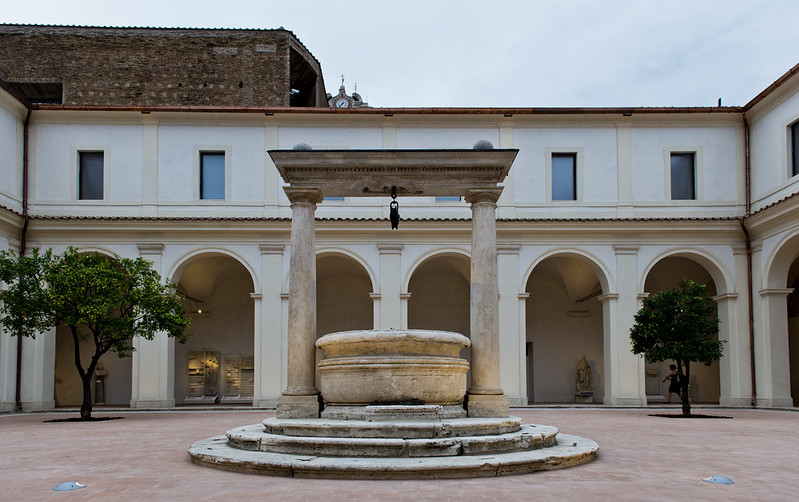The Diocletian Baths in Rome
The Baths of Diocletian, in the centre of today’s Rome, were built between 298 and 306 AD. The building was extensive and it is calculated that it could accommodate 3,000 people at any given time. After a long time of neglect, in the 16th-century the Baths were assigned to the Carthusian monks by Pope Pius IV and in a project designed by Michelangelo, the site was transformed into an impressive charterhouse with an adjoining church (Santa Maria degli Angeli e dei Martiri). The small cloister of the Charterhouse (Chiostro Ludovisi) has suffered significant structural problems since the 1950s, while the ancient open-air pool (natatio) of the Baths was missing much of its architectural decoration and many fissures were also present. This conservation project was challenging as many of the buildings overlap one another, as was the case with the charterhouse cloisters and the open-air pool.
The Baths of Diocletian are an important part of the cultural heritage of the city but had been closed to the public for years due to safety reasons. As noted by the jury, “this renovation project has reopened a vital part of Rome to the public and has reinterpreted the building to convey the significance of the Baths to visitors”. It was of great importance to the conservators that when preserving the monument, the different phases of its development were clearly distinguishable to visitors. Preserving the many phases of the Baths, including its use as a museum since the 19th-century, was a crucial element of maintaining the site’s history. The construction of a new museum within the site also posed a threat to the area’s original aspect and called for intelligent intervention. The renovation works and the new technologies included in the museum were completed in a non-invasive way and were cleverly concealed throughout.

“The high quality of the work carried out at the Baths of Diocletian by the conservators has led to the recovery and enhancement of this iconic monument which unifies the Roman and Renaissance eras, two of the most important periods in European culture. The use of modern interpretative materials is imaginative and is a model of museology for sites of this type”, the jury stated.
